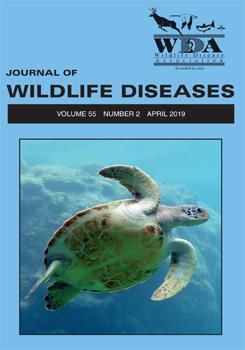Rabies is a fatal zoonotic disease of global importance. Rabies virus is shed in the saliva of infected hosts and is primarily transmitted through bite contact. Canine rabies has been eliminated from the US, but wildlife constitutes more than 90% of the reported cases of animal rabies in the US each year. In the US, several wild carnivore species are reservoirs of distinct variants of rabies virus (RV). After decades of apparent absence, the south-central skunk (SCSK) RV variant was detected in Colorado in 2007 and resulted in a large-scale epizootic in striped skunk (Mephitis mephitis) populations in northern Colorado starting in 2012. We attempted isolation of RV from salivary gland tissues from confirmed rabid carnivores, comprising 51 striped skunks and seven other wild and domestic carnivores collected during 2013 through 2015 in northern Colorado. We isolated RV from 84.0% (158/188; 95% confidence interval=78.1–88.6%) of striped skunk and 71% (17/24; 95% confidence interval =51–85%) of other carnivore salivary glands. These data suggested that infected reservoir and vector species were equally likely to shed the SCSK RV variant and posed a secondary transmission risk to humans and other animals.
How to translate text using browser tools
9 April 2019
Isolation of Rabies Virus from the Salivary Glands of Wild and Domestic Carnivores during a Skunk Rabies Epizootic
Isabel Jimenez,
Terry Spraker,
Jessica Anderson,
Richard Bowen,
Amy Gilbert
ACCESS THE FULL ARTICLE

Journal of Wildlife Diseases
Vol. 55 • No. 2
April 2019
Vol. 55 • No. 2
April 2019
carnivore
rabies virus
reservoir
salivary gland
skunk
vector




